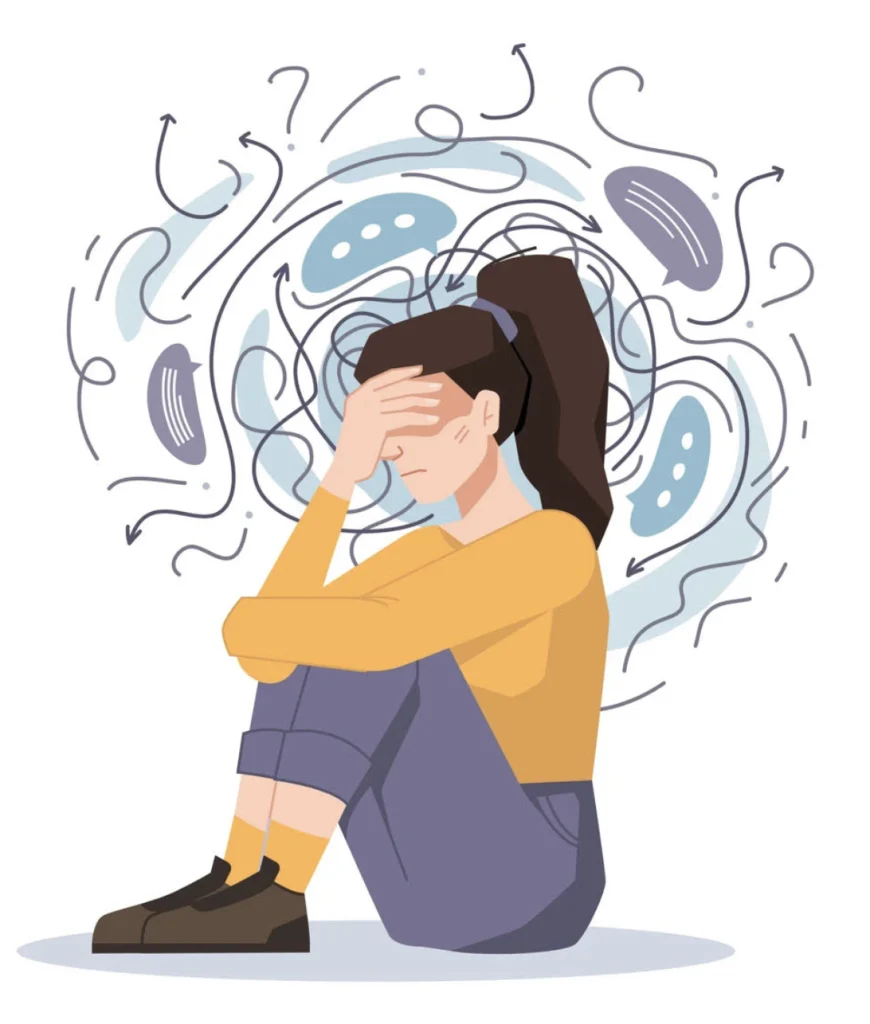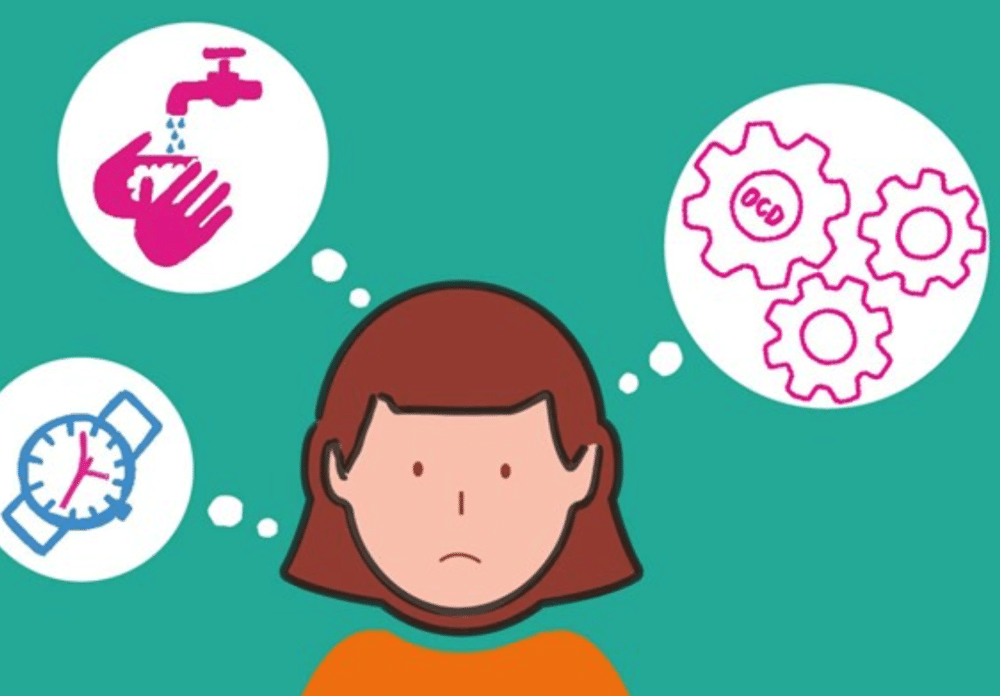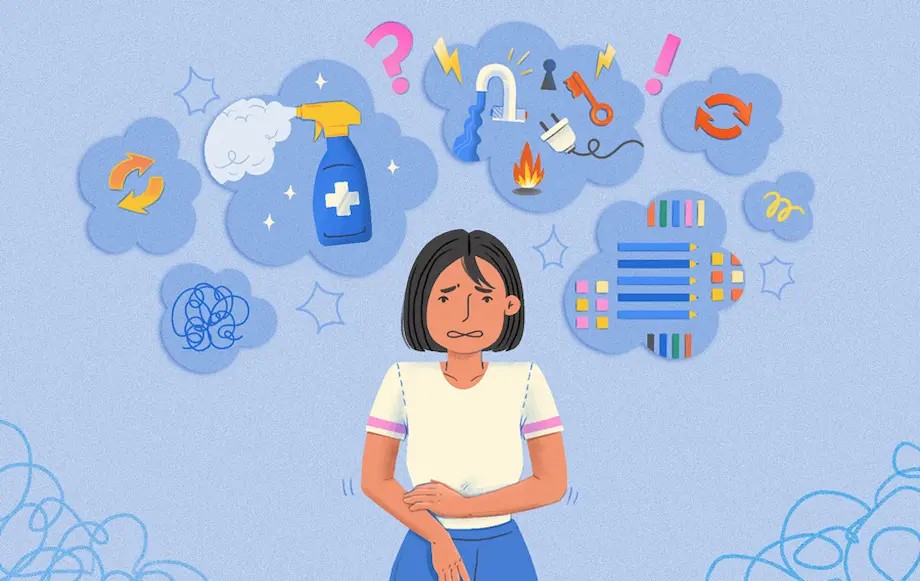Obsessive-Compulsive Disorder (OCD) is a chronic mental health disorder in which individuals experience intrusive, unwanted thoughts, images, or urges—known as obsessions—that cause significant anxiety or distress. To try to reduce this distress or prevent feared events from happening, individuals often feel compelled to perform certain repetitive behaviors or mental rituals, called compulsions. For example, someone might have an obsessive fear of germs and respond with compulsive hand-washing, often for hours a day. Common obsessions include fears of contamination, harming others, or making a mistake, while typical compulsions include checking, cleaning, counting, or repeating actions. Although people with OCD usually recognize that their thoughts and behaviors are irrational or excessive, they feel unable to stop them. The exact cause of OCD is not fully understood but is believed to involve a combination of genetic, neurological, behavioral, and environmental factors. Treatment often includes Cognitive Behavioral Therapy (CBT), particularly Exposure and Response Prevention (ERP), and sometimes medication such as SSRIs to manage symptoms effectively. With the right support and treatment, individuals with OCD can lead fulfilling and productive lives.

Causes of Obsessive-Compulsive Disorder (OCD) :
The exact cause of Obsessive-Compulsive Disorder (OCD) is not fully understood, but it is believed to result from a combination of biological, psychological, and environmental factors. Genetics play a significant role, as OCD tends to run in families, suggesting a hereditary link. Brain imaging studies have shown that people with OCD often have differences in the structure and function of certain areas of the brain, particularly those involved in decision-making, emotional regulation, and response to fear. An imbalance of the brain chemical serotonin, which helps regulate mood and behavior, is also thought to contribute to OCD symptoms. In addition to biological factors, psychological factors such as perfectionism, high levels of anxiety, or a strong need for control may increase the risk of developing the disorder. Environmental stressors, including trauma, abuse, or major life changes, can sometimes trigger the onset of OCD, especially in individuals already predisposed to it. In rare cases, infections like streptococcal throat infections in children have been linked to the sudden onset of OCD symptoms, a condition known as PANDAS (Pediatric Autoimmune Neuropsychiatric Disorders Associated with Streptococcal infections).
- Genetics: OCD often runs in families, suggesting a hereditary component.
- Brain Structure and Function: Differences in areas of the brain that regulate behavior and decision-making, particularly in the orbitofrontal cortex, anterior cingulate cortex, and basal ganglia.
- Neurochemical Imbalance: Low levels of serotonin, a neurotransmitter involved in mood and anxiety regulation.
- Personality Traits: Perfectionism, high levels of anxiety, or a strong need for control may increase vulnerability.
- Environmental Stress: Traumatic experiences, abuse, or major life changes (e.g. loss, illness, or moving) can trigger or worsen symptoms.
- Childhood Infections (PANDAS): In rare cases, streptococcal infections in children may lead to a sudden onset of OCD symptoms due to an autoimmune reaction.
- Learned Behaviors: Some theories suggest that compulsive behaviors may be learned over time as a way to reduce distress caused by obsessions.

Solutions for Obsessive-Compulsive Disorder (OCD):
Obsessive-Compulsive Disorder (OCD) can be effectively managed with a combination of therapy, medication, and lifestyle changes. One of the most successful treatments is Cognitive Behavioral Therapy (CBT), particularly a specialized technique called Exposure and Response Prevention (ERP), which helps individuals confront their fears and reduce compulsive behaviors over time. In many cases, medications, especially Selective Serotonin Reuptake Inhibitors (SSRIs) like fluoxetine or sertraline, are prescribed to help balance brain chemistry and reduce the severity of symptoms. A combination of therapy and medication is often more effective than either treatment alone. Additional support can come from support groups, education, and practicing stress-reducing techniques such as mindfulness, deep breathing, and yoga. Making healthy lifestyle changes—like maintaining a regular routine, getting enough sleep, exercising regularly, and avoiding alcohol or drugs—can also improve overall mental well-being. In severe or treatment-resistant cases, more intensive interventions such as inpatient care, intensive outpatient programs, or even deep brain stimulation (DBS) may be considered. With the right treatment and support, many people with OCD can manage their symptoms and lead fulfilling lives.

- Cognitive Behavioral Therapy (CBT):
- The most effective psychological treatment, especially a specific form called Exposure and Response Prevention (ERP), which helps individuals face their fears without performing compulsions.
- Medication:
- Selective Serotonin Reuptake Inhibitors (SSRIs), such as fluoxetine, fluvoxamine, or sertraline, are commonly prescribed to reduce OCD symptoms. In some cases, other types of antidepressants or medications may be used.
- Combination Therapy:
- A mix of CBT and medication is often more effective than either treatment alone, especially in moderate to severe cases.
- Support Groups and Education:
- Joining support groups or educating oneself about OCD can help reduce stigma, provide emotional support, and promote coping strategies.
- Mindfulness and Stress Management:
- Techniques like meditation, yoga, and deep breathing exercises can help manage anxiety and reduce the intensity of obsessive thoughts.
- Lifestyle Changes:
- Maintaining a regular routine, getting enough sleep, exercising, and avoiding alcohol or recreational drugs can support treatment and improve mental health.
- Professional Support:
- In severe or treatment-resistant cases, individuals may benefit from intensive outpatient programs, inpatient treatment, or deep brain stimulation (DBS) in very rare, extreme cases.
